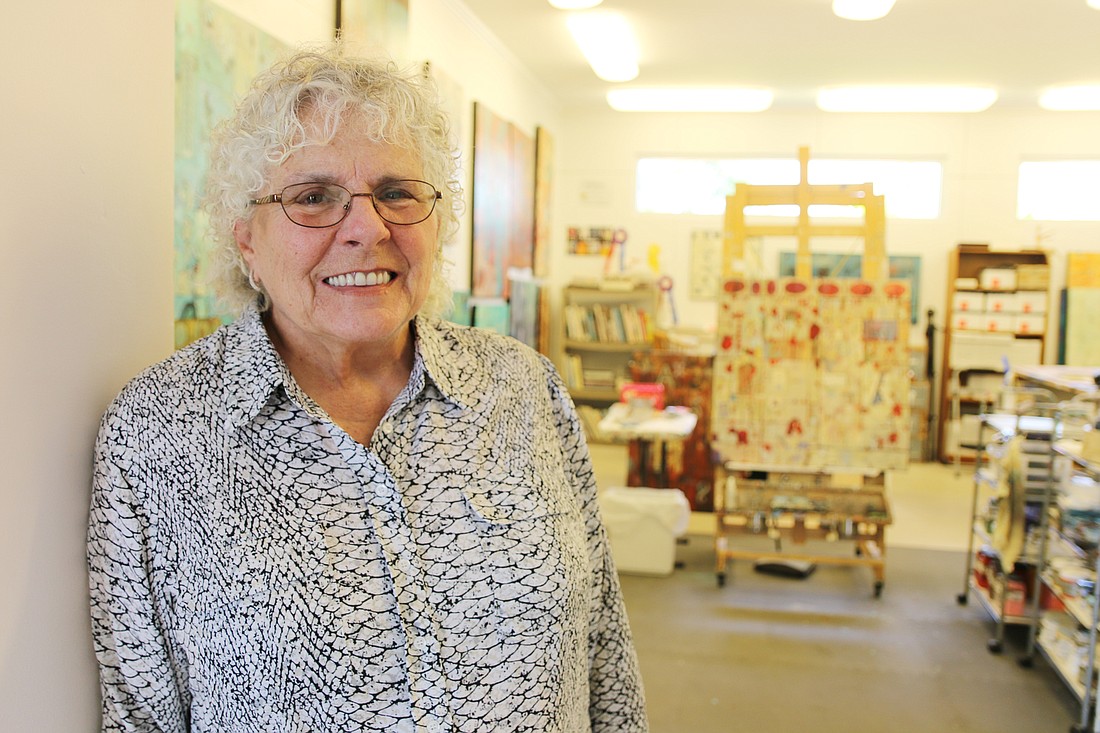- November 26, 2024
-
-
Loading

Loading

For Ormond Beach artist Antoinette Slick, the more abstract the art, the better.
It's the kind of art that makes people think she said. In fact, it makes her think too. Her canvases contain a myriad of symbols, brush strokes and shapes. Slick jokes she can't draw a straight line on her own.
“It’s just an unending opportunity to experience," Slick said. "I haven’t run out of the desire to keep working in this vein. Every time I start a painting, I don’t know where it’s going, and I don’t know when it’s over until it just happens.”
A collection of her nonobjective abstract paintings, simply titled "Wall Series" is currently on display the Ormond Memorial Art Museum. The show, "Surface Interpretation" will remain in the museum for public viewing until April 19, and is inspired from surfaces Slick, who is also a museum board member, has seen while traveling the world in the past six years.
She doesn't search for perfection in the surfaces — she examines the textures, color and construction.
“Other people would be taking pictures of really interesting things and I’d be taking a picture of the floor or the door, or something like that," Slick said. "That just sort of worked its way into just surfaces in general.”
Slick's opening reception on March 8 was successful. She sold 10 paintings.
While she has always been interested in art, and her parents facilitated her passion as a child, when it was time to go to college, she was offered two choices: Become a teacher or a nurse. It was a different time, Slick said.
Because of her aversion to blood, she chose teaching. Slick taught special needs children for about four years before getting married and having four children. When her youngest was old enough to go to school, she was faced with another choice: Get a "real" job, or follow her artistic passions.
“So I decided being serious about the arts would be the most fun,” she said, laughing.
Her works evolved when she moved to Florida from Ohio. Before, she used to paint with transparent watercolors. It was a very regional form of painting, Slick said. But things felt different for her in Florida — the colors, the weather and even the humidity.
“It kept getting more and more abstract, and then I discovered acrylics which allowed me to get even more abstract," Slick said.
About eight years ago, Slick stopped giving "clues" in paintings. Gone were the trees, rocks and birds. Nothing in her paintings is real, she said. Some have told Slick her works look like paintings inside of paintings.
Her home studio is covered with Slick's works, and paint drops dot the floor. This is where she spends her mornings. She may not paint right away, but what matters is having that space to paint.
It's her response when she hears individuals say that despite taking art classes for decades, they haven't progressed in painting. It's like learning to play the piano, she tells them.
“As much as you do it because you’re compelled to do it, you also have to do it to study — you have to practice and you have to do it all the time," Slick said.